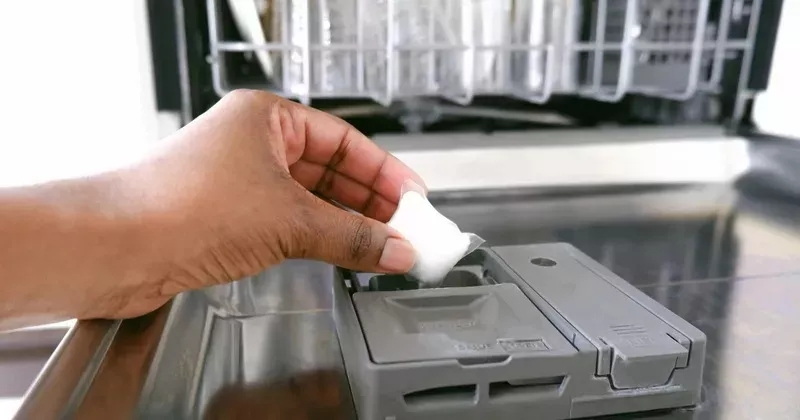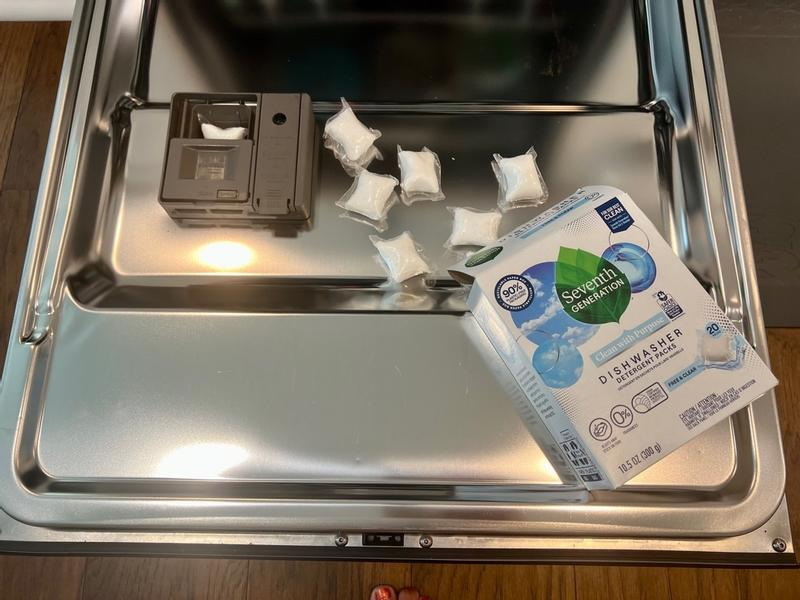Dongguan UFine Daily Chemical Co.,Ltd.
- All
- Product Name
- Product Keyword
- Product Model
- Product Summary
- Product Description
- Multi Field Search
Views: 222 Author: Tomorrow Publish Time: 10-22-2025 Origin: Site











Content Menu
● Understanding Dishwasher Pods
● Where to Place the Pod in a Whirlpool Dishwasher
>> The Detergent Dispenser Compartment
>> Child Safety Considerations
● Special Considerations for Certain Whirlpool Models
● Tips for Using Dishwasher Pods in Whirlpool Dishwashers
>> Do Not Pre-Rinse Excessively
>> Regular Maintenance of Your Dishwasher
● Troubleshooting Common Issues
>> Pod Does Not Dissolve Completely
>> Dishwasher Door Won't Close After Putting Pod
>> Pods Getting Stuck Together
● Environmental Impact and Cost Efficiency
● FAQ
>> 1. Can I put a dishwasher pod directly in the bottom of a Whirlpool dishwasher?
>> 2. What if my dishwasher doesn't have a detergent dispenser?
>> 3. How many pods should I use per load?
>> 4. Can I use dishwasher pods with hard water?
>> 5. What to do if pods are not dissolving properly?
Using dishwasher pods correctly is essential for optimizing the cleaning performance of your Whirlpool dishwasher. This article explains exactly where to place the pod in your Whirlpool dishwasher to ensure your dishes come out sparkling clean every time. We will cover the proper placement, tips to maximize efficiency, and address common questions about dishwasher pods.

Dishwasher pods are pre-measured detergent packets designed to simplify the dishwashing process. They contain a mixture of detergent, rinse aid, and sometimes additional cleaning agents that help in breaking down food residues and grease. Proper placement is crucial because if the pod does not dissolve correctly, it can leave residue or fail to clean properly.
Pods come in various forms, including gel, powder, and combo packs that include rinse aid and sometimes even water softeners. Their convenience has made them very popular, but using them correctly is key to maintaining both the cleanliness of your dishes and the longevity of your dishwasher.
In a Whirlpool dishwasher, the pod should always be placed in the detergent dispenser compartment. This compartment is usually found on the inside of the dishwasher door. It is a small rectangular area with a lid that flips open.
- Open the dishwasher door fully.
- Locate the detergent dispenser, typically on the inner side of the door.
- Open the dispenser lid.
- Place the pod inside the compartment.
- Close the lid securely.
The dishwasher will release the detergent from this compartment at the designated time during the wash cycle.
The dispenser ensures that the pod is kept dry until the water reaches the right time in the cycle for optimal dissolution. This improves cleaning efficiency and prevents detergent wastage.
Some users might be tempted to place the pod at the bottom of the dishwasher or in the utensil basket. However, these spots do not ensure proper dissolution or timing of the detergent release. Placing the pod elsewhere can lead to:
- Incomplete cleaning.
- Residue deposits on dishes.
- Pod damage from direct water spray before the wash cycle.
Pods placed directly in the wash tub are exposed to water immediately, which can cause them to dissolve too early or unevenly. The detergent dispenser protects the pod and synchronizes its release with the dishwasher's operating cycle.
The detergent dispenser keeps pods safely enclosed during the wash cycle. This is especially important in homes with children, as pods contain concentrated detergent that can be harmful if chewed or swallowed.
Always ensure the dispenser lid clicks closed properly to prevent pods from falling out when opening the dishwasher door.
While most Whirlpool dishwashers have a standard detergent dispenser, some newer or specialized models might have different dispenser features or recommendations. For instance, some energy-efficient or compact models could have smaller or redesigned dispensers.
- Always check the user manual of your specific Whirlpool model for any modifications in pod placement.
- Some models may recommend liquid detergent or powder in certain compartments instead of pods.
- Follow model-specific advice to maintain warranty coverage and optimal operation.

Most dishwasher pods are formulated for single loads. Using more than one pod can cause excessive sudsing and might damage your dishwasher's internal components.
Excessive detergent residue on dishes and inside the dishwasher can be avoided by adhering to the recommended pod usage.
Water can prematurely dissolve the pod's outer film, making it sticky or causing it to break apart before placement.
Always make sure your hands are dry when handling pods to avoid them dissolving too early or sticking to surfaces.
Pods contain enzymes that need some residue to work effectively. Avoid over rinse-loading your dishwasher to allow the pod to perform optimally.
Leaving some food residue on dishes actually helps the detergent enzymes activate and break down grime. Pre-rinsing also wastes water and energy.
Dishwashers work best with water temperatures between 120°F and 150°F. If water is too cold, the pod might not dissolve fully.
You can check your water heater's setting to ensure optimal temperature for dishwasher use. If water is cold, the pods may leave residues or cause spotting.
Keep the detergent dispenser clean to prevent clogging or buildup that could interfere with the pod's release. Wipe the compartment regularly and remove any detergent residue.
Also, clean the filter and spray arms to maintain proper water circulation which helps in dissolving and distributing detergent particles.
- Ensure the pod is placed in the detergent dispenser, not loose inside the dishwasher.
- Check if water temperature is adequate.
- Confirm the detergent dispenser lid opens fully during the cycle.
- Clean the dispenser lid and compartment to avoid blockages.
- Avoid using more than one pod per load.
- Regularly clean the dishwasher filter and spray arms.
- Verify correct loading to avoid blocking the dispenser area.
- Consider running a dishwasher cleaning cycle if residue buildup persists.
This can happen if the pod is too large or improperly positioned. Place the pod flat in the dispenser and ensure the lid snaps shut securely.
If the dispenser lid is stuck or broken, it may need repair or replacement to function properly.
If pods clump due to moisture or humidity, store them in an airtight container and handle them with dry hands to prevent sticking and clumping.
Although dishwasher pods offer convenience, some users worry about plastic film waste, though most pods use water-soluble films that are biodegradable. If you prefer, you could switch to powder or gel detergent, but pods remain popular for ease of use and consistent dosing.
Using pods correctly ensures fewer repeated wash cycles, which saves water, energy, and detergent — all cost-effective and environmentally friendly practices.
For the best cleaning results with your Whirlpool dishwasher, always place the dishwasher pod inside the detergent dispenser compartment located on the door's interior. This placement ensures the pod dissolves properly during the wash cycle, maximizing cleaning power and preventing detergent residue buildup. Handling pods carefully, observing dishwasher maintenance, and following the manufacturer's guidelines will help you get the most out of your dishwasher.

No, placing the pod at the bottom can cause improper dissolution and residue; always use the detergent dispenser compartment.
All Whirlpool dishwashers have a detergent dispenser; check your model's manual. If missing, contact Whirlpool support.
Use only one pod per load unless the manufacturer specifies otherwise to avoid oversudsing and damage.
Yes, but for very hard water, consider using a water softener or pods formulated for hard water.
Check placement in the dispenser, water temperature, and dispenser lid functionality; clean dishwasher parts regularly.